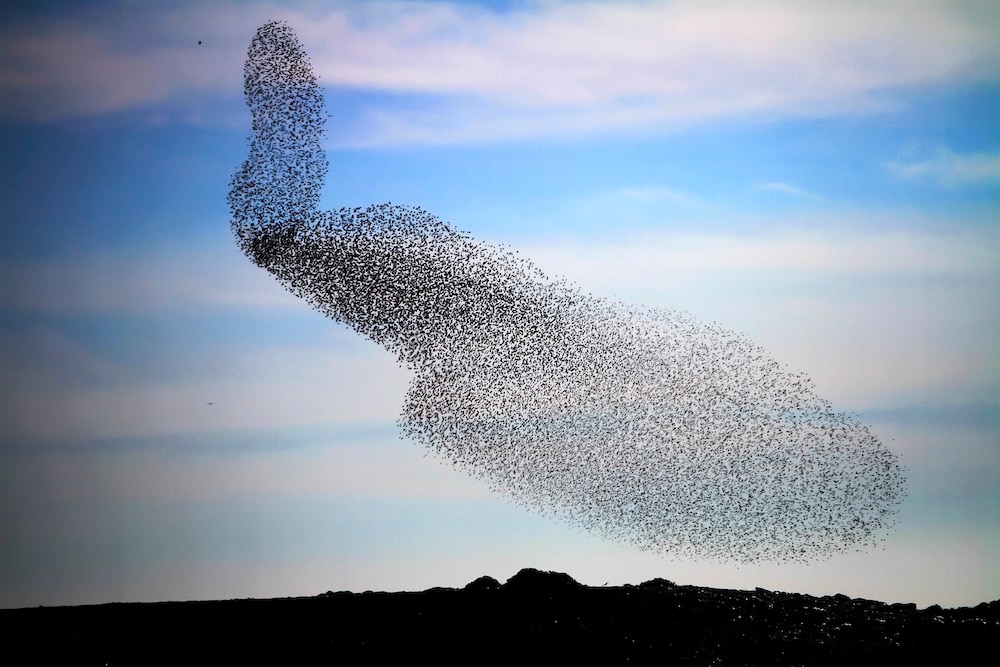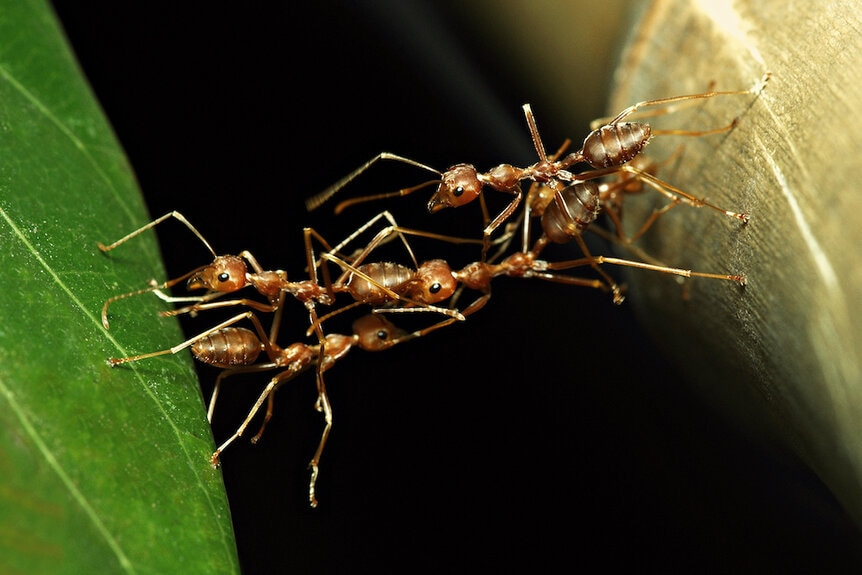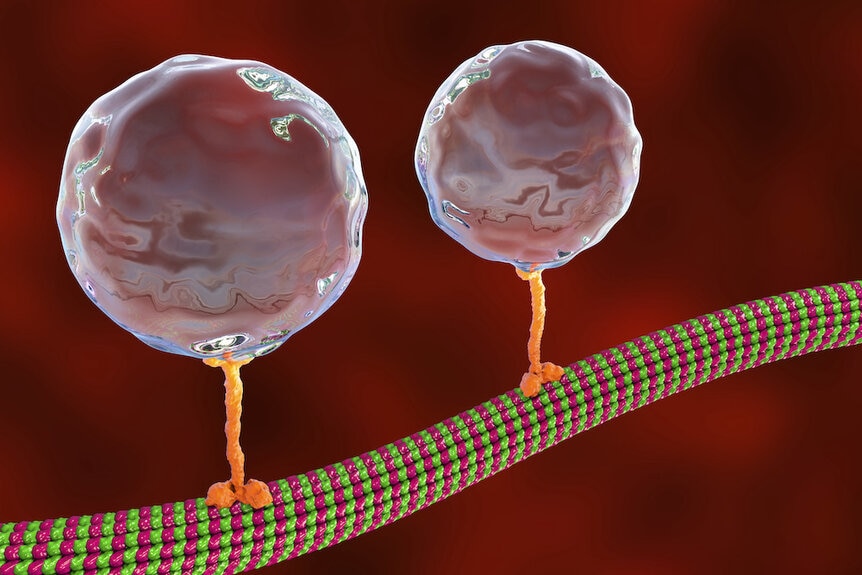Create a free profile to get unlimited access to exclusive videos, sweepstakes, and more!
Scientists made millions of swarming DNA robots
Microscopic molecular swarms could be coming to a body near you.

If you want to see the unfettered power of cooperation, you need look no further than colonial insects. In the 1998 DreamWorks Animation film Antz we follow Z, an ant who is tired of working for the benefit of the colony and wants to chart his own path outside of his prescribed fate.
The movie made some social commentary about the potential dangers of conformity while ultimately coming back around to the power of cooperation. When Mandible, the film’s villain, tricks the colony into building a super tunnel leading to a puddle, in an attempt to assassinate the queen in a violent coup, the colony teams up to build a bridge to the surface.
That bridge-building ability is a real world behavior in some ants, and stands to show the way that ants or other swarming animals work together to accomplish incredible feats that are greater than the sum of their parts. Engineers have been working for years to craft robots with the same cooperative swarming abilities.
They’ve succeeded, to a degree. While swarming behaviors have been established in macro-scale robots, it has remained a challenge in smaller machines. That’s unfortunate because micro or nano robots are necessarily capable of doing less work. They would most benefit from working together.
Now, scientists from Hokaido University, along with collaborators from Kyushu, Columbia, Kansai, and Nagoya Universities, have developed the world’s first micro-scale swarming robots. Their results were published in the journal Science Robotics.
The team constructed 5 million molecular machines made up of microtubules — the major component of eukaryotic cytoskeletons — and DNA. They hijacked biological processes, particularly kinesin motor proteins, to get their molecular machines to transport cargo.
Kinesin motor proteins are used by cells to transport molecules along microtubules by heel-to-toe walking along the pathway. While motor proteins usually cart biological cargo like vesicles and organelles, scientists used their molecular machines to move around small beads made of polystyrene — the stuff that makes up Styrofoam — which measured micrometers in diameter.
During experiments, single molecular machines were able to move beads up to 3 micrometers in diameter. The beads were treated with azobenzene, which reacts strongly with light. Consequently, when the beads interacted with visible light, they loaded onto the motor proteins. Exposure to UV light unloaded them.
A similar process was used to get the machines to swarm. Their DNA was likewise combined with azobenzene, which caused changes in the DNA structure in the presence of visible light. When a light was shined on them, the DNA formed double strands and the machines swarmed together. Just as with the bead loading, exposure to UV light reversed that process.
When the molecular machines were swarming, their ability to transport cargo increased tenfold, allowing them to move beads up to 30 micrometers in diameter. Moreover, in addition to carrying larger loads, experiments showed that the machines were up to five times more efficient in terms of speed and volume when compared with those working alone.
Swarming behavior has many potential applications in the world of the very small, allowing groups of machines to take up novel shapes and navigate changing environments both inside the body and in the wider world. Scientists expect that these sorts of cooperative molecular machines could be used for drug delivery inside patients, transporting medicinal compounds to desired locations. They could also be used to collect contaminants in the environment.
We can imagine swarms of billions or trillions of microscopic machines gathering microplastics from the oceans or collecting particulates out of the air. This is yet another example of how nature and evolutionary processes can inspire artificial solutions better than those we might be able to dream up on our own.
Now if we could only figure out how to get ants to stop sneaking into our homes on their incessant search for crumbs.




























